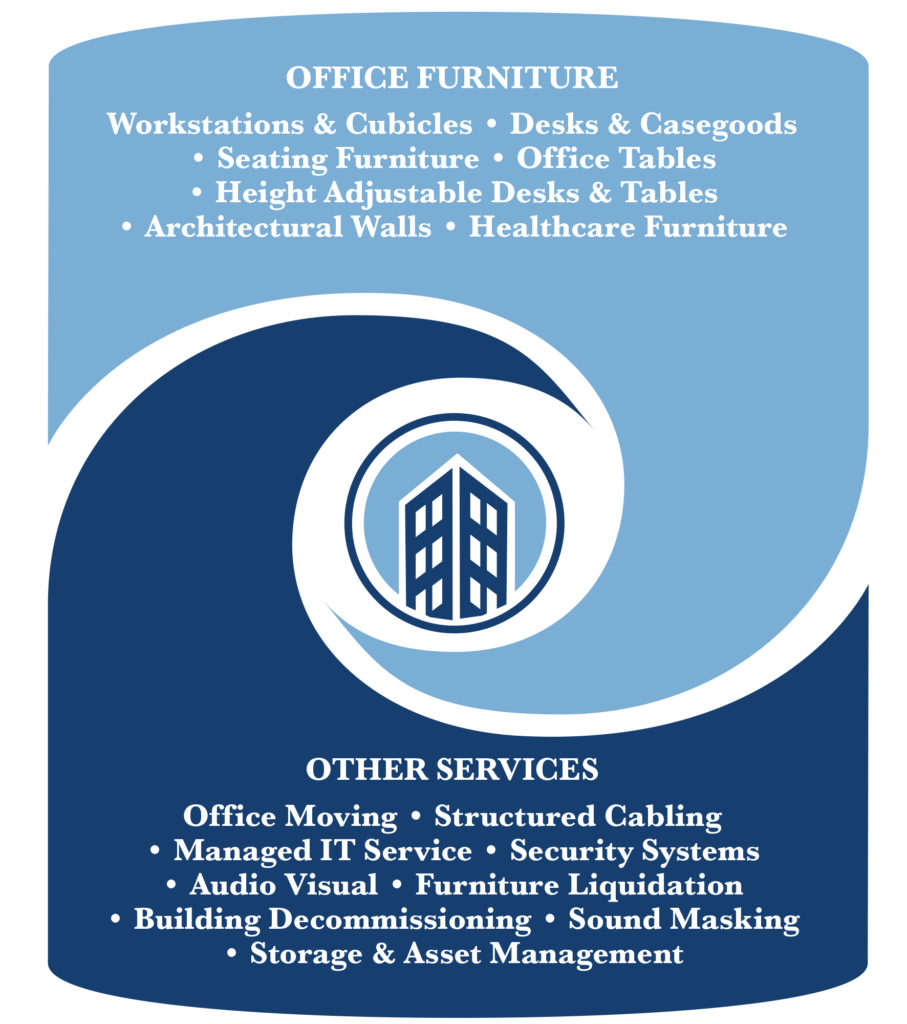21 Feb How to Enhance Office Space in the Return-to-Office Era
As companies navigate the post-pandemic landscape, the significance of office space has never been more apparent. The return-to-office (RTO) movement has sparked a reevaluation of workplace design, emphasizing the need to create environments that not only facilitate productivity but also prioritize employee well-being and satisfaction. When you enhance office space you will more easily attract and retaining talent, foster collaboration, and reinforcing company culture.
In this era of hybrid work models, the office must offer compelling reasons for employees to commute and spend time on-site. It is no longer about providing a desk and chair; it’s about crafting an experience that adds value to an employee’s workday. This shift in perspective has led to innovative approaches in office design, focusing on flexibility, technology integration, and employee-centric amenities.
As we delve into the many ways to enhance office space, it’s crucial to recognize that the most effective solutions will vary depending on your organization’s unique needs, culture, and workforce demographics. The key is to remain adaptable and responsive to the evolving expectations of your employees while aligning with your company’s goals and values.
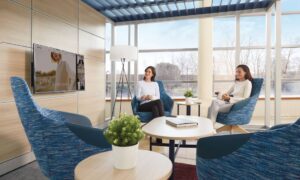
Image Source: 9to5, Global Furniture Group, Friant
Understanding Employee Needs in the Post-Pandemic Workplace
Before embarking on a project to enhance office space, it is essential to gain a comprehensive understanding of your employees’ needs and preferences. The pandemic has fundamentally altered many workers’ expectations regarding their work environment, and failing to address these changes could result in decreased job satisfaction and productivity.
Consider conducting surveys, focus groups, or one-on-one interviews to gather insights into what your employees value most in their workspace. Some common themes that have emerged in the post-pandemic era include:
- Flexibility in work arrangements
- Enhanced health and safety measures
- Access to quiet spaces for focused work
- Improved technology for seamless collaboration
- Areas for social interaction and team building
- Amenities that support work-life balance
By actively involving your employees in the decision-making process, you not only gain valuable insights but also foster a sense of ownership and engagement in the workplace transformation. This collaborative approach can lead to more effective and widely accepted changes in your office space.
Remember that needs may vary across different departments or job functions within your organization. Tailor your approach to accommodate these diverse requirements while maintaining a cohesive overall design strategy.
Flexible Layouts: Adapting Spaces for Various Work Styles
One of the most effective ways to enhance office space is by implementing flexible layouts that can accommodate a variety of work styles and tasks. The traditional one-size-fits-all approach to office design is no longer sufficient in today’s dynamic work environment. Instead, consider creating a mix of spaces that cater to diverse needs throughout the workday.
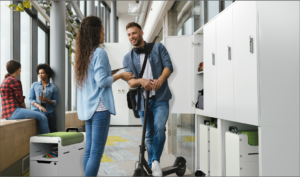 Here are some ideas for incorporating flexibility into your office layout:
Here are some ideas for incorporating flexibility into your office layout:
- Activity-based workspaces: Design areas specifically tailored to diverse types of work, such as focused individual work, collaborative projects, or creative brainstorming sessions.
- Hot-desking or hoteling: Implement a system where employees can reserve workstations as needed, rather than having assigned desks. This approach can maximize space efficiency and promote interaction between different teams.
- Modular furniture: Invest in easily movable and reconfigurable furniture that allows employees to adjust their workspace on the fly.
- Breakout areas: Create informal spaces where employees can gather for impromptu meetings or take a break from their desks.
- Phone booths or privacy pods: Install small, privacy pod enclosed spaces for private phone calls or video conferences.
By offering a variety of workspace options, you empower employees to choose the environment that best suits their current task or personal work style. This flexibility can lead to increased productivity, job satisfaction, and overall well-being.
Prioritizing Health and Wellness in Office Design
In the wake of the pandemic, health and wellness have become top priorities for employees returning to the office. Strive to enhance office space with features that promote physical and mental well-being to increase employee satisfaction and productivity.
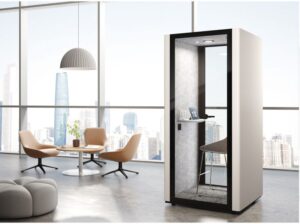 Consider implementing the following health-focused enhancements:
Consider implementing the following health-focused enhancements:
- Improved air quality: Invest in high-quality air filtration systems and ensure proper ventilation throughout the office.
- Touchless technology: Install touchless faucets, doors, and elevator controls to minimize the spread of germs.
- Ergonomic furniture: Provide adjustable chairs, standing desks, and ergonomic accessories to support proper posture and reduce physical strain.
- Natural lighting: Maximize access to natural light, which has shown to improve mood and productivity.
- Quiet zones: Create designated areas for relaxation or meditation to help employees manage stress.
- On-site fitness facilities: If space allows, consider adding a gym or yoga studio to encourage physical activity during the workday.
By demonstrating a commitment to employee health and wellness, you not only create a safer work environment but also show that you value your team’s overall well-being. This can lead to increased loyalty, reduced absenteeism, and improved job performance.
Technology Integration for Seamless Hybrid Work
As hybrid work models become the norm, it is crucial for you to enhance office space with technology that supports seamless collaboration between on-site and remote employees. A well-integrated tech setup can help bridge the gap between different work locations and ensure that all team members can contribute effectively, regardless of their physical presence in the office.
Consider the following technological enhancements:
- Video conferencing rooms: Equip meeting spaces with high-quality audio visual capabilities to facilitate virtual meetings.
- Booking systems: Implement user-friendly software for reserving desks, meeting rooms, or other shared spaces.
- Smart whiteboards: Install interactive digital whiteboards that are shared with remote participants in real-time.
- Wireless charging stations: Provide convenient charging options throughout the office to support mobile device usage.
- IoT sensors: Use smart sensors to monitor occupancy, temperature, and other environmental factors for optimal space utilization and comfort.
When integrating innovative technology, prioritize user-friendliness and provide adequate training to ensure that all employees can take full advantage of the available tools. Regular feedback sessions can help identify any issues or areas for improvement in your tech setup.
Creating Collaborative Zones to Foster Teamwork
While individual work areas are important, enhance office space by creating dedicated spaces for collaboration is equally crucial in enhancing your office space. These zones should be designed to encourage spontaneous interactions, facilitate brainstorming sessions, and support team projects.
 Here are some ideas for effective collaborative zones:
Here are some ideas for effective collaborative zones:
- Open meeting areas: Design informal gathering spaces with comfortable seating and writable surfaces for impromptu discussions.
- Project rooms: Set up dedicated spaces for long-term projects, equipped with tools and technology to support ongoing collaboration.
- Innovation labs: Create areas specifically designed for creative thinking and experimentation, with flexible furniture and interactive technology.
- Social hubs: Develop inviting spaces, such as a well-equipped kitchen or lounge area, where employees can interact casually and build relationships.
- Outdoor collaboration spaces: If possible, create outdoor areas like rooftop gardens or courtyards for team meetings and social events.
When designing these collaborative zones, consider factors such as acoustics, lighting, and privacy to ensure they can accommodate diverse types of group work without disrupting nearby individual workspaces.
Incorporating Biophilic Design Elements
Biophilic design, which incorporates natural elements into the built environment, has gained significant traction in office design due to its positive impact on employee well-being and productivity. By bringing elements of nature into the workplace, you can create a more calming and inspiring atmosphere that helps reduce stress and improve cognitive function.
Consider the following biophilic design elements:
- Living walls: Install vertical gardens or green walls to add visual interest and improve air quality.
- Natural materials: Use wood, stone, and other natural materials in furniture and finishes.
- Water features: Incorporate small fountains or water walls to create a soothing ambiance.
- Nature-inspired patterns: Choose carpets, wallpapers, or artwork that mimic natural patterns and textures.
- Plant life: Introduce a variety of indoor plants throughout the office space.
- Natural light: Maximize access to daylight and views of the outdoors where possible.
When implementing biophilic design, aim for a balanced approach that complements your overall office aesthetic and does not overwhelm the space. Even small touches of nature can have a significant impact on the overall feel of your workplace.
Personalizing Workspaces for Employee Comfort
While creating a cohesive office design is important, allowing employees to personalize their individual workspace can significantly enhance their comfort and sense of belonging. Personalization can lead to increased job satisfaction, productivity, and a stronger connection to the workplace.
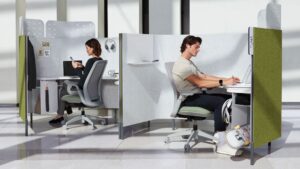 Here are some ways to encourage workspace personalization:
Here are some ways to encourage workspace personalization:
- Adjustable furniture: Provide desks and chairs that can be easily customized to each employee’s preferences.
- Personal storage: Offer lockers or storage units where employees can keep personal items.
- Customizable lighting: Install task lighting that can be adjusted for individual comfort.
- Acoustic solutions: Provide sound masking, noise-cancelling headphones or desk partitions for those who prefer a quieter environment.
- Display areas: Designate spaces where employees can display personal photos or artwork.
Establish clear guidelines for personalization to maintain a professional appearance while still allowing for individual expression. Encourage employees to regularly refresh their workspace to prevent clutter and maintain a clean, organized environment.
Enhance Office Space Aesthetics for Improved Morale
The visual appeal of your office space can have a significant impact on employee morale and overall workplace atmosphere. A well-designed, aesthetically pleasing environment can inspire creativity, boost energy levels, and create a positive first impression for clients and visitors.
Consider the following strategies to enhance your office aesthetics:
- Color psychology: Use color strategically to influence mood and productivity in different areas of the office.
- Art installations: Invest in artwork that reflects your company culture and values.
- Branded elements: Incorporate your company’s branding in subtle ways throughout the space.
- Varied textures: Mix different textures in fabrics, wall coverings, and flooring to add visual interest.
- Lighting design: Use a combination of ambient, task, and accent lighting to create depth and atmosphere.
- Focal points: Create visual anchors in each area of the office to guide the eye and break up large spaces.
When enhancing your office aesthetics, strive for a balance between professionalism and creativity. The goal is to create an environment that feels both inspiring and conducive to focused work.
Balancing Cost-Effectiveness with Employee-Centric Design
While enhancing your office space is crucial for employee satisfaction and productivity, it is important to balance these improvements with cost-effectiveness. A well-planned approach can help you achieve significant improvements without breaking the budget.
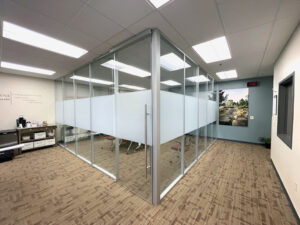 Consider these strategies for cost-effective office enhancements:
Consider these strategies for cost-effective office enhancements:
- Prioritize improvements: Focus on changes that will have the most significant impact on employee satisfaction and productivity.
- Phased implementation: Spread out major renovations over time to manage costs and minimize disruption.
- Repurpose existing elements: Look for ways to update or repurpose current furniture and fixtures before replacing them.
- Energy efficiency: Invest in energy-efficient lighting and HVAC systems to reduce long-term operational costs.
- Multipurpose spaces: Design areas that can serve multiple functions to maximize space utilization.
- Employee involvement: Engage employees in DIY projects or idea generation to create a sense of ownership and reduce costs.
Remember that the most expensive solution is not always the most effective. Focus on creating value for your employees and aligning enhancements with your company’s goals and culture.
Concluding Thoughts: Future-Proofing Your Office Space: Adaptability and Sustainability
As you enhance office space for the post-covid era, it is essential to consider future needs and trends to ensure your investment remains relevant in the long term. Adaptability and sustainability should be key considerations in your design approach.
Here are some strategies for future-proofing your office space:
- Flexible infrastructure: Install modular walls and easily reconfigurable power and data systems to accommodate future layout changes.
- Scalable technology: Choose technological solutions that can be easily upgraded or expanded as your needs evolve.
- Sustainable materials: Opt for eco-friendly, durable materials that will stand the test of time and minimize environmental impact.
- Smart building systems: Implement IoT-enabled systems for energy management, space utilization, and predictive maintenance.
- Wellness certifications: Consider pursuing certifications like WELL or Fitwel to demonstrate your commitment to employee well-being.
- Scenario planning: Develop multiple layout options for quick implementation in response to changing work patterns or business needs.
By prioritizing adaptability and sustainability in your office enhancements, you will create a workspace that can evolve with your organization and continue to meet the needs of your employees for years to come.
Ready to transform your office space and create an environment that truly supports your employees’ needs? Take the first step today by conducting a comprehensive survey of your team’s preferences and work styles. Use these insights to prioritize the enhancements that will have the most significant impact on productivity, well-being, and job satisfaction. Remember, a well-designed office is an investment in your most valuable asset – your people. Start your office transformation journey now and reap the benefits of an engaged, motivated workforce.
Contact us today to schedule a consultation and discover how we can help you create an office space that not only meets but exceeds your employees’ expectations.
MyOffice has over 20 years of experience in supporting client’s implementing office solutions. We understand the needs of the modern office environment. Optimizing your workspace through furniture selection and layout is a core competency of ours. We are here to help!
